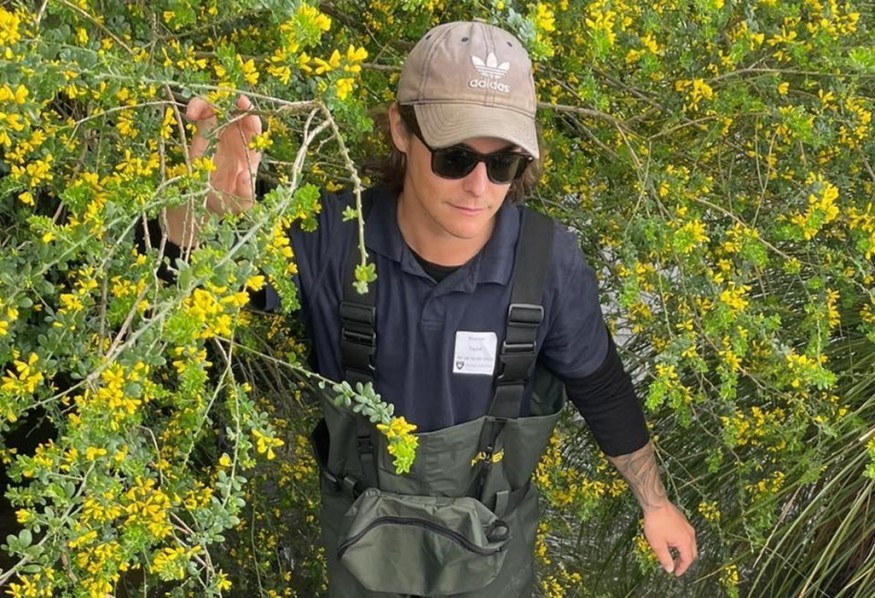
When Taylor Thomson visits schools across New Zealand, he often encounters a surprising misconception about his work. Despite explaining his role as an environmental scientist studying water quality, many members of the public assume he's testing waterways for COVID-19 rather than monitoring nutrient pollution.
This disconnect between scientific research and public understanding has become a driving force behind Thomson's dual career as both a researcher and educator. The environmental scientist has made it his mission to bring complex ecological concepts directly into classrooms, helping students understand environmental challenges before they require costly restoration efforts.
"Field-based STEM opens so many doors to kids and teachers just to experience all these things that they never would otherwise," Thomson said during a recent interview about his educational outreach work. "I feel like specifically in my field, I was never exposed to this sort of thing until I was a few years into university."
Taylor Thomson's Educational Approach Transforms Science Learning
Thomson's work with Field-Based STEM takes him into primary and secondary schools across New Zealand, where he conducts water quality analysis and teaches students to identify environmental problems in their local communities. His recent five-day tour of Auckland schools included visits to Alwyn College, Roseville College, Parkade School, and Tapo School, reaching students from age five through year thirteen.
Rather than simply lecturing about environmental science, Thomson engages students in hands-on fieldwork. At Alwyn College, he helped students identify optimal locations for monitoring programs in the reserve behind their school. At Roseville, students learned to search for macroinvertebrates and assess stream health through direct observation of stream banks and surrounding environments.
The approach reflects Thomson's belief that environmental education works best when students can see immediate, tangible connections to their daily lives. His background spans both environmental science and psychology, providing him with insights into how people process and respond to scientific information.
"I really wanted to learn somewhat help people tick and use that to my advantage in benefiting the environment," Thomson explained about his educational focus. "So how can we implement changes in the environment in a way that people are going to support?"
Breaking Down Barriers between Scientists and Communities
Thomson's educational philosophy stems from his broader research on ecological tipping points in New Zealand estuaries. His master's work at Waikato University involves building models that predict when coastal ecosystems might shift from healthy, clear-water states to degraded, nutrient-rich conditions that struggle to support marine life.
The research addresses a fundamental challenge in environmental management: helping communities understand problems that develop slowly over time and may not become visible until significant damage has occurred. Thomson's models examine keystone species like mamoni clams, which play crucial roles in nutrient cycling but cannot survive in highly polluted conditions.
"What I'm trying to do is make a model using a few keystone species in the environment and we're influencing them with nutrients and sediments to identify in how many years we expect that proverbial ball to go over the hill," Thomson said, referring to ecological tipping points.
This technical work informs his classroom visits, where he helps students conduct the same types of environmental assessments he uses in his research. Students learn to test water quality, identify indicator species, and understand how human activities affect local ecosystems.
Thomson's current role as an Environment Specialist at BHP, combined with his previous experience as an environmental monitoring officer with the Waikato Regional Council, provides him with practical expertise that resonates with students and teachers alike.
The scientist advocates for early intervention in environmental education, arguing that prevention proves far more effective than restoration. "Really gets the kids thinking about how they can preserve these environments so people like us and people like them in the future don't have to do all this work to bring it back to these pristine environments that we love to see here in New Zealand."
His approach emphasizes local relevance, connecting global environmental challenges to specific places students know and care about. This strategy helps overcome what researchers call "psychological distance"—the tendency for people to view environmental problems as remote or abstract rather than immediate and personal.
Thomson's work represents a growing recognition within the scientific community that effective environmental protection requires not just rigorous research, but also sustained public engagement and education. His dual focus on advancing ecological modeling and improving science communication demonstrates how researchers can extend their impact beyond academic publications to create lasting change in how communities understand and protect their natural environments.
The combination of hands-on fieldwork, local relevance, and clear communication has made Thomson's educational programs particularly effective at inspiring the next generation of environmental stewards while advancing public understanding of critical ecological research.
© 2025 NatureWorldNews.com All rights reserved. Do not reproduce without permission.





